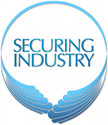Global Anti Counterfeit Packaging Technologies Market For Food and Pharmaceuticals (2009-2014)
 Publication date: February 2010
Publication date: February 2010
Number of pages: 199
Pricing:
- Single user license: $4,650
- Multi user license: $5,650
- Corporate license: $7,150


View Table of Contents
View Sample

Report Description
Counterfeiting was earlier a problem specific to developing countries of Africa and Asia. However, with the recent increase in parallel trading and internet pharmacies, the industry has also expanded in developed nations such as the U.S. and Europe. Counterfeit medicines in particular are on the increase. The most commonly counterfeited drugs in developed countries are the so-called ‘lifestyle drugs’ and other common pharmaceuticals that have a high demand, such as aspirin, antacid, and analgesics.
The global counterfeit industry generates an estimated $670 billion annually. To prevent this huge loss to the pharmaceutical industry, manufacturers have started utilizing advanced packaging technologies such as security inks, holograms, taggants, and radio frequency identification tagging (RFID). Major retailers such as Wal-Mart in the U.S. and Tesco in the U.K. have made it compulsory for their suppliers to incorporate RFID tags on medicines. Currently, RFID and 2D-barcodes are the most prominent packaging technologies available to prevent counterfeiting. Taggants are also witnessing huge growth due to its wide application and integration in other packaging technologies such as holograms, security inks, and RFIDs.
This report will analyze the market potential of anti-counterfeiting technologies for food and pharmaceuticals packaging, as these are the two most prominent sectors taking anti-counterfeit measures. This report not only provides a comprehensive market estimate of the anti-counterfeit macro-markets; it also gives a detailed analysis of its submarkets, which have so far remained unexplored.
Scope of the report
The report gives a full breakdown of the entire market for anti-counterfeiting food and pharmaceuticals packaging technologies. The market is segmented on the basis of products, applications, and technologies. Each section will provide market data, market drivers, trends and opportunities, top-selling products, key players, and competitive landscape.
The report covers major technologies such as:
1. Authentication technologies (inks and dyes, holograms, watermarks, taggants)
2. Trace and track technologies (barcodes, RFIDs)
The application areas include the packaging of:
1. Food products (dairy, meat, sea food, bakery, confectionery, convenience, and baby food)
2. Pharmaceuticals (generic drugs, prescription drugs, power boosters etc.)
The report features more than 40 tables to give a complete insight into the market, along with 45 profiles of the top companies in this market. All market tables will be categorized by geography, application, and technology. The report highlights strategic issues like tapping the upcoming markets such as RFID application in anti-counterfeit packaging. The strategic analysis also includes consolidating strategy, new product development, competitive positioning, gap analysis, and identification of opportunities and challenges. The report identifies niche opportunities for all the sub-segments within the anti-counterfeiting food and pharmaceuticals packaging technologies market.
Enquiry Form
For more information, or to order this report, please complete the form below:



